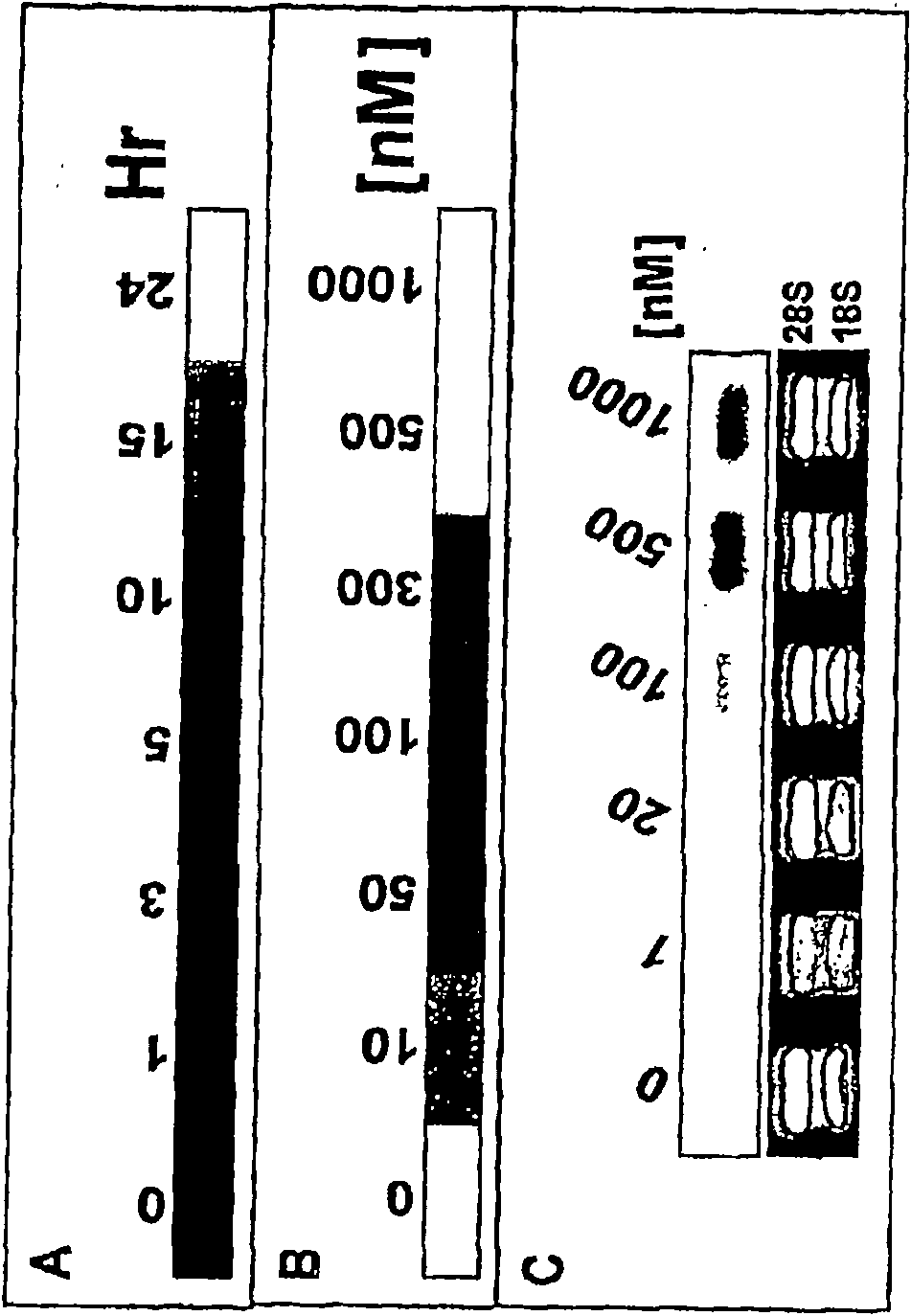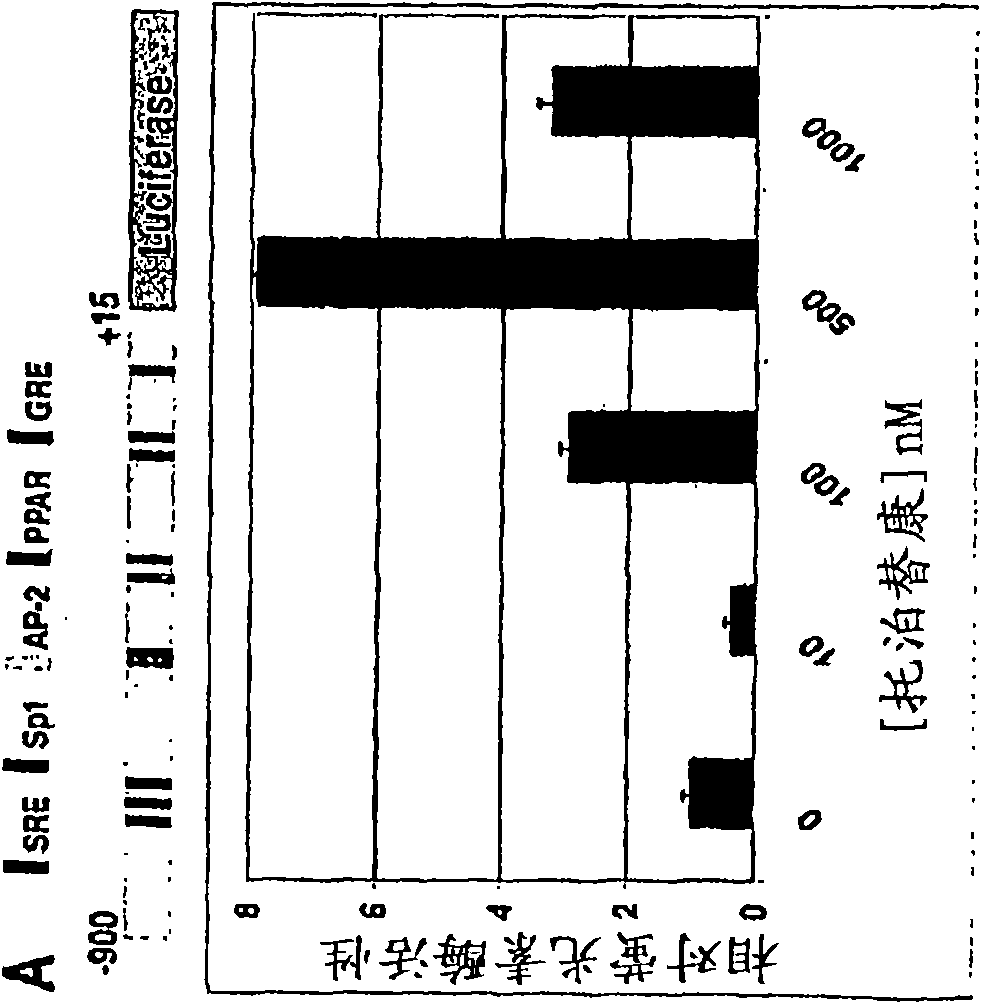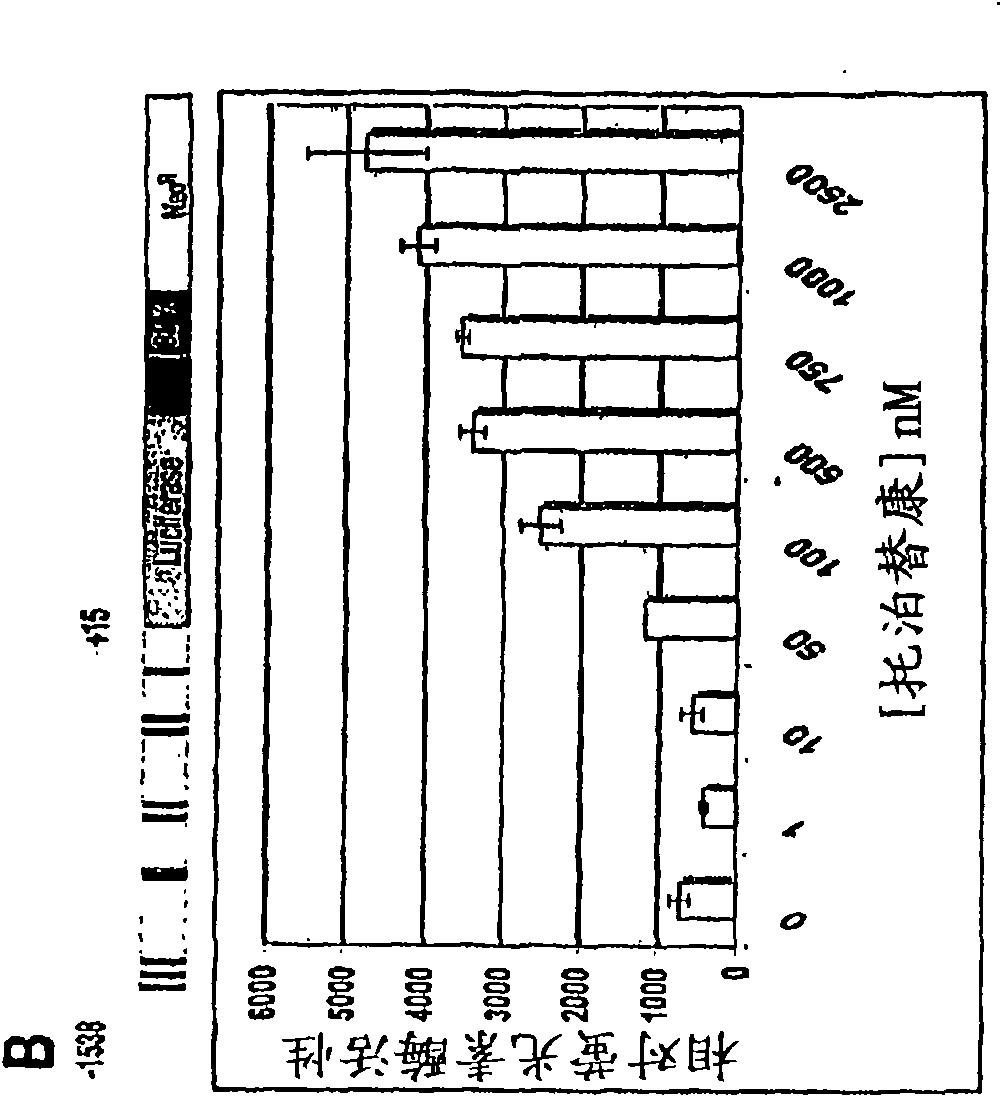Small molecule intervention for obesity
An obesity, obesity technology, applied in the field of small molecule intervention for obesity, can solve problems such as interference with fat storage
- Summary
- Abstract
- Description
- Claims
- Application Information
AI Technical Summary
Problems solved by technology
Method used
Image
Examples
Embodiment 1
[0085] The pharmacological response of embodiment 1-HepG2 cells to topotecan
[0086] To investigate the mechanism of resistance to topoisomerase (Top) 1 inhibitors by expressing the genome, by performing a time course and dose-response time, DNA microarray was used to study the resistance of human hepatoblastoma HepG2 cells to topotecan Pharmacological response, the cells were treated with 500 nM topotecan (cytotoxic anti-cancer agent) for various times (0, 1, 3, 5, 10, 15 and 24 hours) or with various doses of topotecan Kang (0, 10, 50, 100, 300, 500 and 1000 nM) was treated for 24 hours.
[0087] Topotecan-induced changes in overall gene expression were modest, with most genes showing low-level changes in expression except for the PLTP gene.
[0088] figure 1 The results in show the time course of PLTP response to topotecan ( figure 1 A) and dose response ( figure 1 B) Dendrogram of expression. Activation of PLTP expression by topotecan was time-regulated and dose...
Embodiment 2
[0091] Example 2. Screening for Natural Product Small Molecule Inducers of PLTP Gene Expression
[0092] PLTP is involved in reverse cholesterol transport. Furthermore, PLTP expression and activity are associated with obesity. Additionally, increased fat storage in C. elegans following inactivation of PLTP gene expression by RNA-mediated interference suggests that small molecules targeting PLTP may be useful in the development of drugs to treat obesity.
[0093] To determine whether non-cytotoxic small molecules could induce PLTP expression, the inventors subcloned the PLTP-promoter luciferase reporter gene into a vector containing a selectable marker for neomycin (G418) resistance and stabilized Gene transfection with G418 and selection with G418 generated a transgenic HepG2 cell line with a PLTP-promoter luciferase reporter gene. The transgenic cell line HepG2 / PLTPpLuc showed a similar topotecan response to HepG2 cells transiently transfected with the PLTP-promoter repor...
Embodiment 3
[0096] Example 3. Anti-obesity effect of prieurianin
[0097] Little is known about prieurianin. It is a limonoid compound and a natural product anti-feedant, which exhibits antagonism against 20-hydroxyecdysone in cultured Drosophila cells. In cell culture studies, the drug was relatively non-cytotoxic compared to topotecan.
[0098] prieurianin was intraperitoneally administered to 12-14 week old normal C57BL / 6J mice and genetic leptin-deficient ob / ob mice twice a week (2 or 5 mg / kg) for 2 weeks. Controls received equal injections of drug vehicle. Body weight and food intake were measured every 3 days, and blood samples were collected at the end of the experiment.
[0099] For leptin-deficient ob / ob mice treated at 2 or 5 mg / kg, treatment with prieurianin produced a dose-dependent decrease of up to 10% of total body weight after 2 weeks (see Figure 13 Table 1 contained therein.
[0100] In addition, a dose-dependent decrease in food intake of up to 50% was also obser...
PUM
| Property | Measurement | Unit |
|---|---|---|
| molecular weight | aaaaa | aaaaa |
Abstract
Description
Claims
Application Information
 Login to View More
Login to View More - R&D
- Intellectual Property
- Life Sciences
- Materials
- Tech Scout
- Unparalleled Data Quality
- Higher Quality Content
- 60% Fewer Hallucinations
Browse by: Latest US Patents, China's latest patents, Technical Efficacy Thesaurus, Application Domain, Technology Topic, Popular Technical Reports.
© 2025 PatSnap. All rights reserved.Legal|Privacy policy|Modern Slavery Act Transparency Statement|Sitemap|About US| Contact US: help@patsnap.com



